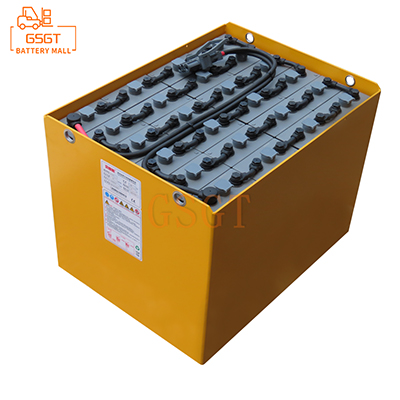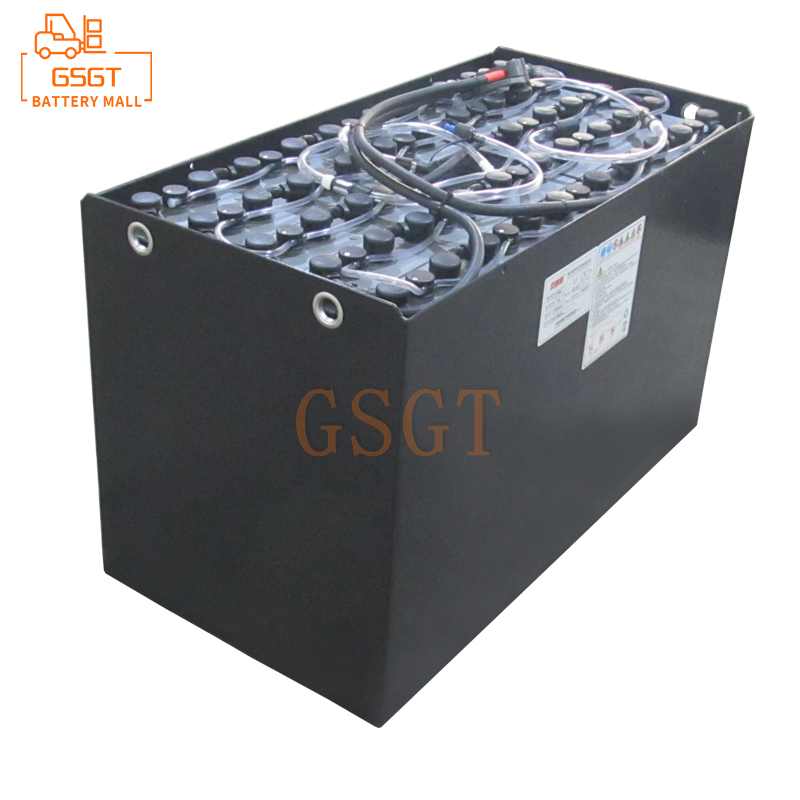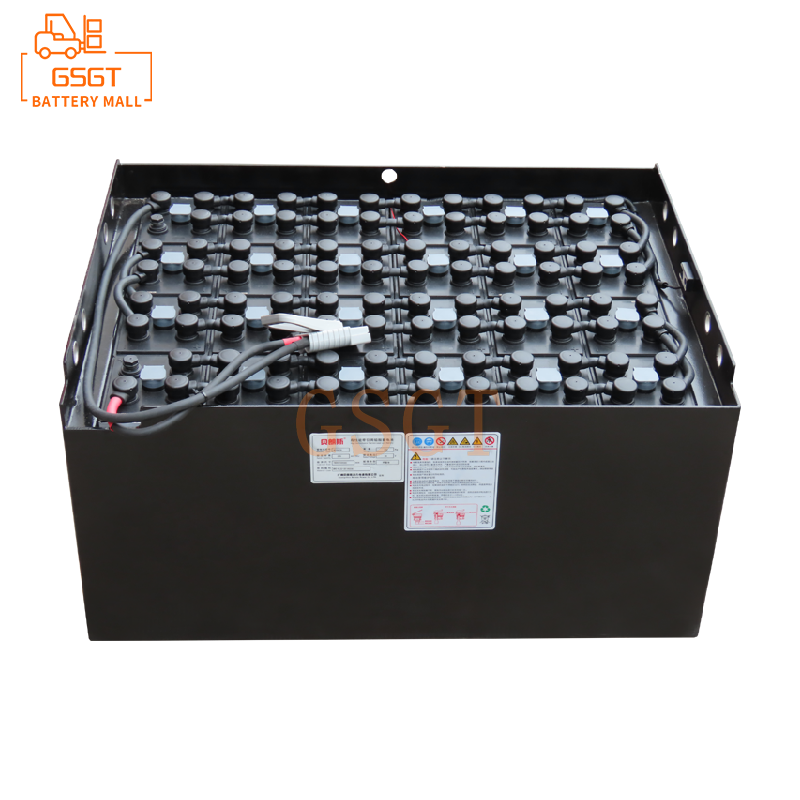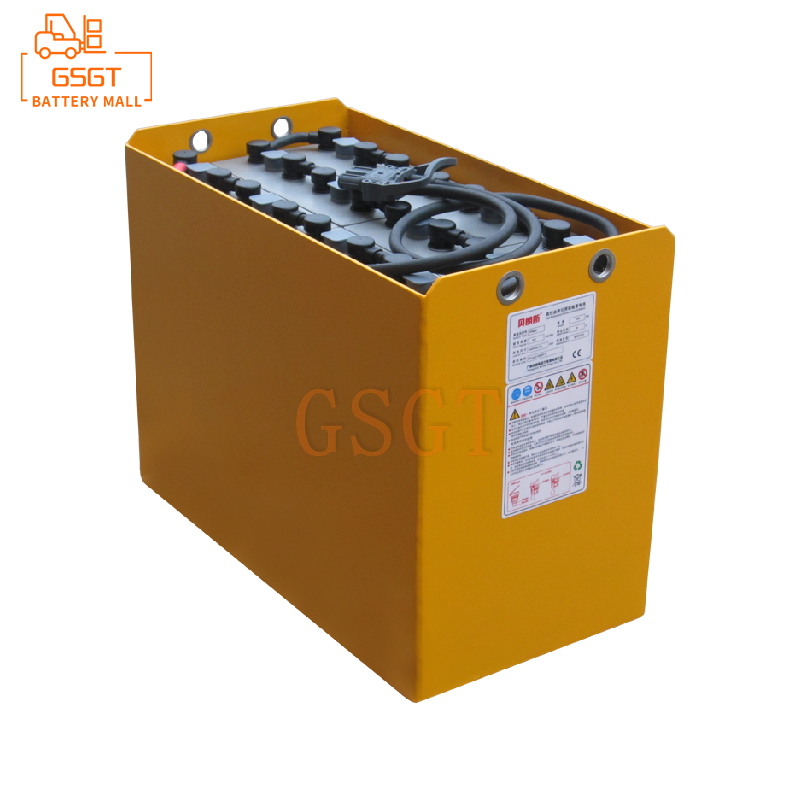Time:2025-06-18 10:18:59
Browse:622
In the modern logistics and warehousing industry, forklifts, as important handling equipment, are widely used in various scenarios. As the power core of forklifts, the performance and service life of lead-acid batteries in forklifts directly affect the working efficiency of forklifts and the operating costs of enterprises. Therefore, understanding and strictly adhering to the precautions during the use of lead-acid batteries in forklifts is of vital importance for ensuring the normal operation of forklifts and extending the service life of the batteries.
1. Precautions during the Charging Process
(1) Choose the appropriate charger
The charging requirements of lead-acid batteries for forklifts of different specifications and models vary. When choosing a charger, it is essential to ensure that the output voltage and current of the charger match the rated parameters of the battery. If the output voltage of the charger is too high, it will cause the battery to overcharge, accelerate the sulfation of the plates and shorten the battery's lifespan. If the output voltage is too low, the battery cannot be fully charged, which will affect the working time of the forklift. Similarly, if the output current is too large or too small, it will have adverse effects on the battery. In addition, it is advisable to choose a charger with intelligent charging capabilities. Such chargers can automatically adjust the charging current and voltage based on the battery's charging status, effectively preventing overcharging and undercharging, and enhancing charging efficiency and safety.
(2) Correct charging environment
The charging site should maintain good ventilation conditions. This is because during the charging process, lead-acid batteries produce flammable and explosive gases such as hydrogen. If the ventilation is poor, these gases accumulate to a certain concentration and, upon encountering open flames or static sparks, can easily cause explosion accidents. Meanwhile, the temperature of the charging environment also has a significant impact on the charging effect and the lifespan of the battery. Generally speaking, the optimal charging temperature for lead-acid batteries is around 25℃. Both excessively high and low temperatures will reduce the charging efficiency and accelerate the aging of the battery. When the ambient temperature exceeds 35℃, cooling measures should be taken, such as using air conditioners or fans. When the ambient temperature is below 5℃, a charger with temperature compensation function should be used, or the battery should be moved to a warm room for charging.
(3) Standardized charging operations
When connecting the charger to the battery, the power supply of the forklift should be disconnected first. Connect them according to the correct polarity, that is, connect the positive terminal of the charger to the positive terminal of the battery and the negative terminal to the negative terminal. Incorrect connection may cause a short circuit in the battery, leading to serious accidents such as fire or explosion. During the charging process, it is necessary to avoid frequently plugging and unplugging the charger plug to prevent the generation of electric sparks and potential dangers. When the battery is fully charged, the connection between the charger and the battery should be disconnected first, and then the power of the charger should be turned off. In addition, each charging time should not be too long to avoid overcharging. Under normal circumstances, the charging time of a common lead-acid battery should not exceed 8 to 10 hours. The specific time can be adjusted according to the battery's user manual and actual conditions.
2. Precautions during the Discharge Process
(1) Avoid excessive discharge
Excessive discharge of lead-acid batteries is one of the main reasons for their shortened lifespan. When the battery voltage drops to a certain extent, the forklift should be stopped in time and charged. Generally speaking, for a 12V lead-acid battery, discharge should be stopped when the voltage drops to around 10.5V. For a 24V battery, charging is required when the voltage drops to around 21V. Excessive discharge will accelerate the sulfation of the plates and cause the shedding of active substances, resulting in a decrease in the capacity of the battery. To prevent excessive discharge, forklifts can be equipped with battery level display devices. Operators should always keep an eye on the battery level and make preparations for charging in advance.
(2) Control the discharge current
During the actual operation of forklifts, operations such as sudden acceleration and sudden braking should be avoided as much as possible, as these actions can cause instantaneous large current discharge. Excessive discharge current will cause the battery plates to heat up, accelerate their aging, and also reduce the battery's discharge efficiency and service life. In addition, when moving heavy objects, the moving route and speed should be reasonably planned to avoid operating under high load for a long time, so as to control the discharge current within a reasonable range.
(3) Balanced discharge
For forklift lead-acid battery packs composed of multiple individual cells, it is necessary to ensure that the discharge levels of each individual cell are balanced. If the discharge among individual batteries is unbalanced, it will lead to excessive discharge of some batteries and insufficient discharge of others, thereby affecting the performance and lifespan of the entire battery pack. To achieve balanced discharge, regular inspection and maintenance of the battery pack can be carried out, checking parameters such as the voltage and electrolyte density of each individual battery, and promptly adjusting and repairing unbalanced batteries.
3. Daily Maintenance Precautions
(1) Regularly check the electrolyte
During the use of lead-acid batteries, the electrolyte will gradually decrease due to electrolysis and evaporation. Therefore, it is necessary to regularly check the electrolyte level. When conducting the inspection, it should be carried out after the battery has been fully charged and cooled down. Open the liquid injection hole cover on the battery and observe whether the electrolyte level is between the upper and lower liquid level marks. If the liquid level is lower than the lower mark, distilled water or special lead-acid battery replenishment fluid should be added. Do not add tap water or other liquids containing impurities, as this may affect the performance of the battery. At the same time, the density of the electrolyte should also be regularly tested. Under normal circumstances, the density of the electrolyte should meet the requirements of the battery's user manual. If the density of the electrolyte is too high or too low, it can be adjusted by adding distilled water or sulfuric acid solution. However, the adjustment process should be carried out with caution to avoid splashing sulfuric acid and injuring people.
(2) Clean the surface of the battery
During the operation of a storage battery, dust, moisture and residues left by the overflow of the electrolyte will accumulate on its surface. These substances can cause surface leakage of the battery and reduce its performance. Therefore, the surface of the battery should be cleaned regularly with a damp cloth to remove dust and dirt. During the cleaning process, it is important to prevent water from entering the battery interior. At the same time, do not use organic solvents or corrosive cleaning agents to avoid damaging the battery casing. In addition, it is necessary to check whether the terminals and connecting wires of the battery are corroded or oxidized. If so, they can be sanded clean with sandpaper and an appropriate amount of Vaseline or special conductive paste can be applied to prevent further oxidation and ensure a good connection.
(3) Regularly perform deep discharge and equalization charging
To activate the active substances on the battery plates and extend the battery's lifespan, deep discharge and equalization charging of forklift lead-acid batteries should be carried out regularly. Deep discharge refers to reducing the battery's charge to a relatively low level, but it is important to avoid over-discharge. It is generally recommended to perform a deep discharge every 2 to 3 months. After deep discharge, equalization charging should be carried out in a timely manner. The equalization charging time is usually 12 to 16 hours, and the specific operation can be carried out according to the battery's user manual. Equalization charging can make the voltage and capacity of each individual battery in the battery pack tend to be consistent, improving the overall performance of the battery pack.
(4) Storage Precautions
If the lead-acid battery of a forklift needs to be stored for a long time, it should be fully charged first, and then recharged every half a month to prevent self-discharge of the battery and resulting in low power. The storage environment should be dry, well-ventilated and cool, avoiding direct sunlight and dampness. Before storage, the surface of the battery should be cleaned thoroughly and Vaseline should be applied to the terminals for protection to prevent oxidation. At the same time, the battery should be disconnected from the forklift to prevent it from being discharged due to leakage in the forklift's circuit.
4. Safety Operation Precautions
During the use of lead-acid batteries in forklifts, safety always comes first. Operators should strictly follow the operating procedures and wear protective equipment such as protective gloves and goggles to prevent the electrolyte from splashing onto the skin and eyes. In case of accidental contact with the electrolyte, rinse immediately with plenty of water and seek medical attention promptly. In addition, when installing, disassembling and maintaining the battery, insulated tools should be used to avoid danger caused by short circuits. At the same time, it is necessary to ensure that the charging sites are equipped with essential fire-fighting equipment, such as fire extinguishers, to deal with possible fire accidents.
To sum up, the usage process of lead-acid batteries in forklifts involves multiple links, and each link has its specific precautions. Only by strictly adhering to these precautions and doing a good job in charging, discharging, daily maintenance and safe operation, can the performance stability of forklift lead-acid batteries be ensured, their service life be prolonged, the operating costs of enterprises be reduced, and the efficiency and safety of logistics and warehousing operations be improved.

$3405

$3050

$5710

$1690

MESSAGE
Professional And Efficient
Security
Affordable Price
Professional Services